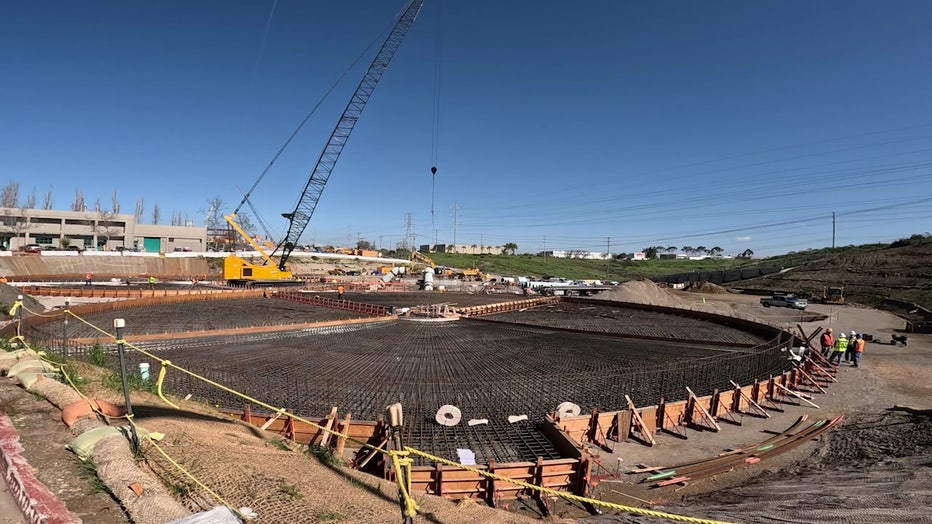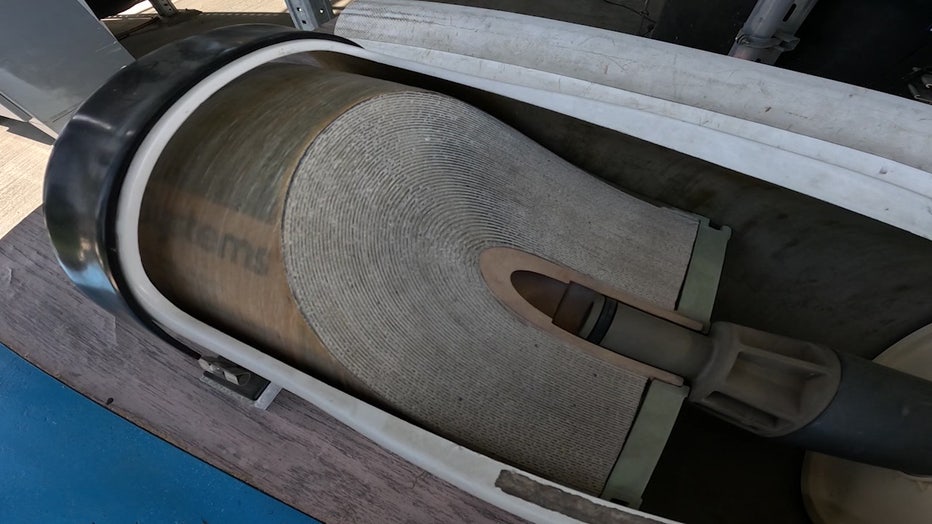As water crisis persists, San Diego looks at treated wastewater as a drinking water source
SAN DIEGO - As Arizona faces an ongoing mega-drought and a mounting water crisis, leaders are looking for ways to ensure Arizona's water supply.
In 2023, Arizona will lose 20% of its water allotment from the Colorado River, and countless steps have been taken by government officials in the state, with water conservation plans implemented by various cities.
Read More: Arizona cities dealing with water issues as megadrought continues: here's what you need to know
On May 1, we took a look at desalination, which is used in San Diego to satisfy a portion of the county's water needs. We also heard from experts on whether desalination is a feasible solution for a landlocked state like Arizona.
"That's not an easy process by any means, but it's so critical to have the conversations now and not be waiting a year, two years, five years when you actually need something new, and it can't open overnight. So we need to be thinking about it now," said Michelle Peters with Poseidon, a company that runs the desalination plant in Carlsbad, Calif., which is near Sann Diego.
San Diego has other plans to secure water supply

Could treated wastewater be a solution to the water crisis?
The Southwest is in the grips of a megadrought, and while San Diego is relying on desalination to turn saltwater into freshwater for a portion of its water needs, the city is also looking at treated wastewater as another water source. FOX 10's Steve Nielsen has more on how sewage is turned into something clean and safe to drink or use.
Besides desalination, however, San Diego officials have even bigger plans, in terms of strengthening their water supply.
A few miles inland in San Diego, one is able to see that bigger plan, in the form of cranes, pipes and cement.
"[It is] the city's largest infrastructure project," said Amy Dorman with the City of San Diego.
That is the future site of a very expensive water treatment plant that will turn sewer water into drinking water. One might recoil at the thought of water that is reclaimed from sewage, but San Diego city officials say the water is very clean, and very safe.
Educations is also key in this plan, as city officials have taken tens of thousands of residents through a small test area to show them how the water treatment process works.
"That's why we've been running this test facility for a dozen years, and have taken 50,000 samples of the water and tested the quality, so were confident it's safe," said Dorman.
Officials describe water treatment process

Construction site for a new water treatment plant in San Diego, California.
Dorman showed us the water treatment process, which is remarkably similar to desalination. The waste water is first pressurized through an ultra-filtration process that shoots it through thousands of hollow fibers to remove the waste. Then, a reverse osmosis process runs the pressurized water through a tightly wound sheet.
"You can't see the pores," said Dorman. "You can only see them under a really powerful microscope, but it's just the water molecule that gets through."
Finally, the water is exposed to ultraviolet light to remove anything that could have made it through. The plant's first phase had a price tag of $1.5 billion, and before the treated water went to anyone's home, it is sent to a lake, where it is mixed with other lake water.
"This allows us to really maximize how much we're going to recycle, and it will create a supply that is 55% of our supply portfolio," said Dorman.
The project's second phase, of which there is no cost estimate yet, the treated water would bypass the lake, and would be sent directly to homes.
While the up-front cost is expensive, San Diego officials say doing this will be cheaper for them.
"The cost of our imported water has tripled in the last 20 years, and it's continuing on that trend," said Dorman.
By 2035, San Diego city officials hope to provide 80 million gallons of treated water a day to the city. The key will be educating residents that the water is not gross.
"We had to overcome the stigma of just starting from a wastewater source, running it through a battery of treatment technology to purify it, and prove it to the regulators and public. That took some time," said Dorman.
Water treatment also used in other parts of the country

A cut section showing the filter used in the treatment of wastewater at a plant in San Diego, California.
San Diego is not the only city with a water treatment program of this kind.
"Once you understand the process, science behind it, it really became less scary and less disgusting," said Clayton Lane.
Lane lives in Wichita Falls, Texas. The city, located in North Texas, was the first city in the nation to send treated wastewater directly to homes.
"Just the whole drinking poo water, drinking sewage water sounds terrible. The marketing is just awful for it, but I would recommend looking into it and seeing how it's done," said Lane.
Lane said the water actually tastes better now than before.
"Perfect," said Lane. "It's perfect."

